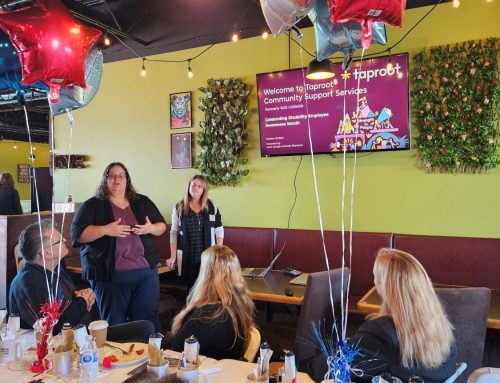An article published by Spinal Cord Injury BC about job fairs focused on persons with disabilities on the Lower Mainland BC.
“These events had different formats but they conveyed the same message: that the disproportionately high unemployment rate—46.16% according to Statistics Canada—among people with disabilities necessitates changes. And, that such changes often start with opening access to resources and information.”

Here are some tips they gave to help people with disabilities stand out in the crowded job market:
Network. This tool is one of the keys to finding a job but it is important to think of networking not just as a way to find a job but as an opportunity to meet new people and expand one’s social and professional circles.
Attend informational interviews. These interviews are one of the best ways to gather information about an employer, ask questions and leave a good impression of yourself.
Research the organization you’re applying for. Not only do employers look for the right skills and experience, they also look for a culture fit. Rather than sounding like everybody else, add a personal touch to your resume, and emphasize why your skills and values mesh with that particular organization.
Don’t try to hide gaps in your employment history. Don’t be discouraged if you don’t have an extensive work experience. To paraphrase one of the employers at the Forum, sometimes it’s better not to have any experience at all—there will be no bad work-related habits that the employer will have to deal with.
Ask someone to proofread your resume and cover letter. Just one spelling error can make employers think twice about hiring you. You don’t want to be disqualified from the selection process because of small writing mistakes. And, it never hurts to get a second opinion on how to make your resume and cover letter punchier.
Demonstrate a positive attitude and enthusiasm. This is one of the top qualities that most of the employers said they desire in a candidate. After all, why would anyone offer you a job that it doesn’t look like you really want.
Connect to a hiring manager; attend a local branch. This method might not land you a full-time job right away but part-time, on-call opportunities are a great way to get your foot in the door. In addition to that, revisit a 3-month old posting. Probationary periods typically lasts 3 months, and whoever got the job might not have stayed beyond that timeframe.
Utilize social networks. Platforms like LinkedIn, Facebook and Twitter are becoming widely-used job search strategies.
Strive for constant self-improvement. No one has ever done themselves a disservice by improving professionally, and personally. While you look for a job, or transition between positions, there are plenty of great online tools and webinars, as well books, to keep you occupied and constantly improving.
READ FULL ARTICLE: http://sci-bc.ca/news-and-blog/hiring-disability-employment-hope-change/





